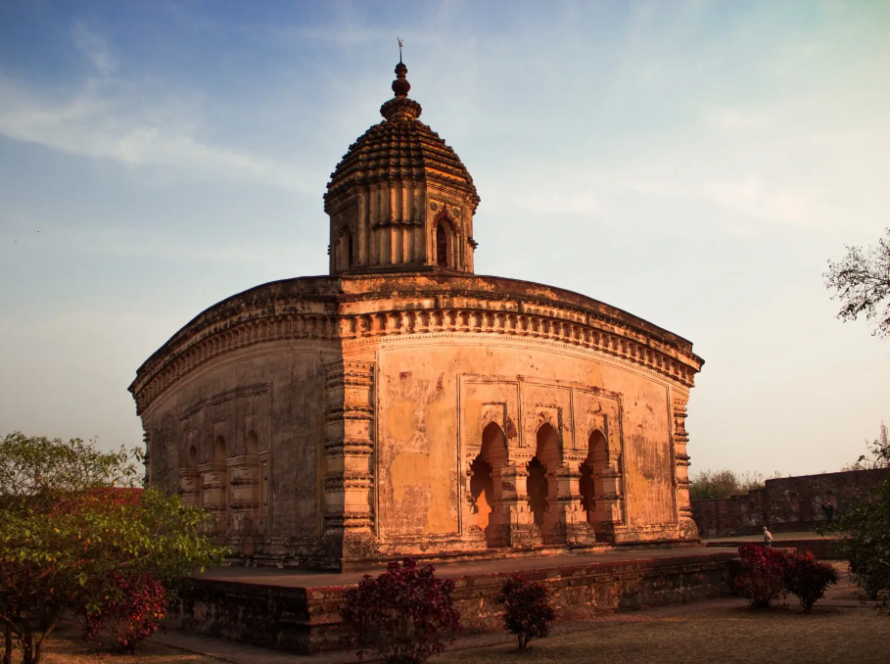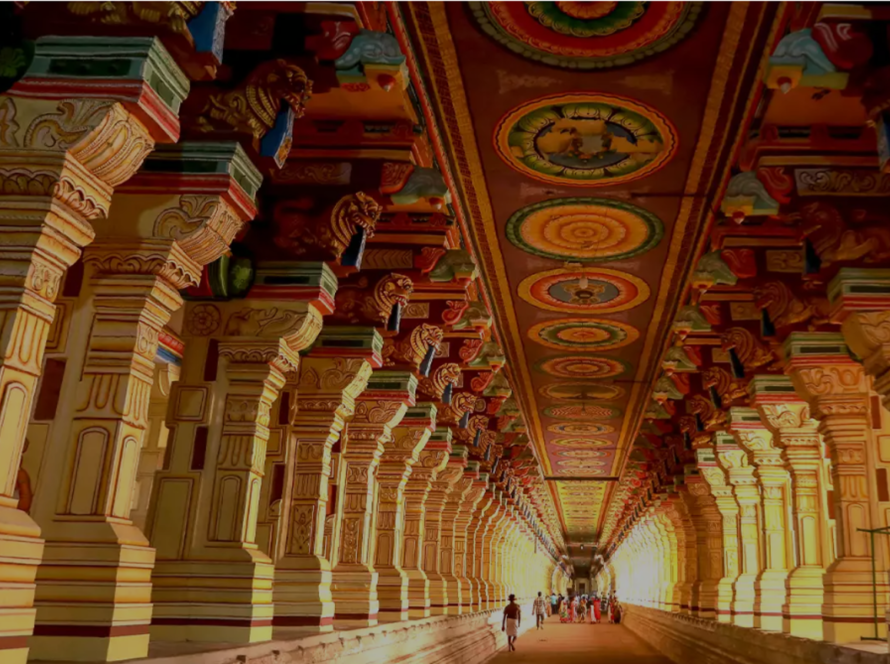Hidden in the quiet folds of the Dhauladhar mountains in Himachal Pradesh, far from the roaring crowds and royal capitals, stands a marvel etched into the living rock—the Masrur Rock Temples. Carved in the 8th century CE, these monolithic shrines speak not just of devotion, but of daring—a bold architectural experiment that brought the soaring elegance of Nagara-style spires into the rugged embrace of the Himalayas.
Unlike the structural temples of the northern plains or the rock-cut sanctuaries of the Deccan, Masrur is a paradox—both sculpture and architecture, mountain and temple, permanence and fragility. It is one of the rare examples where North Indian temple forms were not constructed stone by stone, but carved directly into a hill of sandstone, as if the divine itself demanded to be released from within the earth.


The complex was conceived as a cluster of 15 rock-cut shrines, centered around a grand sanctum believed to be dedicated to Lord Shiva. These shrines, laid out in a symmetric, cruciform plan, reflect the pancharatha and triratha styles that would later define mature Nagara architecture. Their spires—though weathered by time—still reach skyward with vertical rhythm, stepped contours, and a sense of sacred ascent. Even in their partial incompletion, they pulse with artistic intent and spiritual power.
Each detail at Masrur tells a story. The pyramidal shikharas, carved rather than constructed, showcase the early experimentation with the verticality and rhythm that would become iconic in temples like those at Khajuraho or Bhubaneshwar. The ornamentation, though restrained, hints at evolving sculptural finesse—a visual language still finding its grammar in stone. The central sanctum, accessible through intricately carved entrances and pillared mandapas, aligns with celestial geometry, reinforcing the idea of the temple as a cosmic axis.
But perhaps the most breathtaking aspect of Masrur lies not within, but before it. A sacred tank, rectangular and still, reflects the temple spires like a mirror of the heavens. In that still water, earth and sky meet—a symbolic mandala that unites form and reflection, reality and transcendence. It’s as if the gods wished their temple to be seen twice—once by the eyes, and once by the soul.

The choice to carve such grandeur into Himalayan stone was not arbitrary. It was a declaration—that the Himalayas, long regarded as the abode of sages and gods, could also cradle artistic and architectural mastery. Masrur thus becomes more than a temple; it is a bridge between nature and nirvana, between innovation and tradition.
Though damaged by time and earthquakes—most notably in 1905—the essence of Masrur survives. It does not impress with opulence or scale alone, but with silence, symmetry, and spirit. It remains relatively unknown, a hidden gem in the truest sense—waiting not just to be seen, but to be felt.
In an era where monumental temples were often built to assert royal authority, Masrur whispers a different legacy—one of harmony with landscape, of artistry born from ascetic patience, and of a quiet but confident step in the evolution of Nagara architecture.
Today, the Masrur Rock Temples stand as a timeless dialogue between the chisel and the cosmos, inviting us to pause, to look deeper, and to listen—to the story of stone, faith, and the Himalayan imagination.



